 UltraMarine 1st Company Tyranid Hunters
UltraMarine 1st Company Tyranid HuntersSunday, February 24, 2008
Wednesday, February 20, 2008
Notes
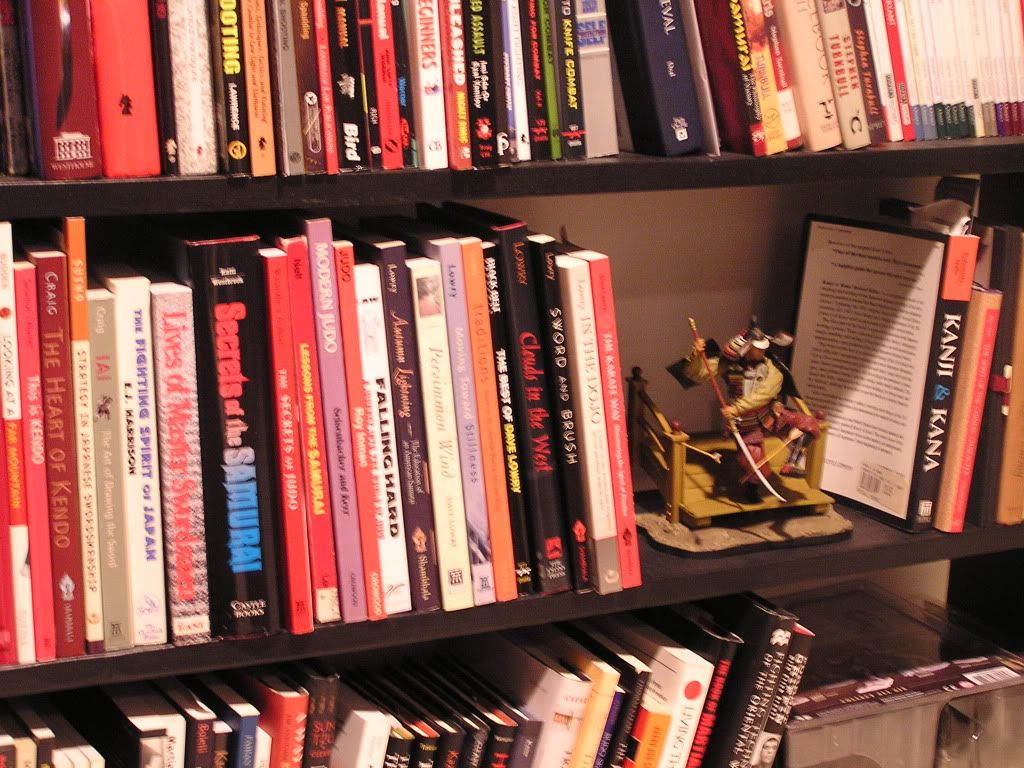 I've been collating and reorganizing my martial arts notes for over a year now. Martial Arts notes, particularly in the Bujinkan, are a source of disagreement. One school of thought is that the only knowledge worth having is the knowledge you have internalized. There's more than a little truth to that, but I'm a bog believer in the written word. There's an enormous amount of information to remember that goes beyond the physical movements, plus I think it is a benefit to be able to explain how and why something works, not simply be able to do them.
I've been collating and reorganizing my martial arts notes for over a year now. Martial Arts notes, particularly in the Bujinkan, are a source of disagreement. One school of thought is that the only knowledge worth having is the knowledge you have internalized. There's more than a little truth to that, but I'm a bog believer in the written word. There's an enormous amount of information to remember that goes beyond the physical movements, plus I think it is a benefit to be able to explain how and why something works, not simply be able to do them.I've got nearly 200 pages of notes in my latest reorganization, and I'm nowhere near finished. That alone ought to give you an idea of the amount of information we're talking about. Am I really suppossed to keep it ALL in my head? (My wife will vouch that I have trouble remembering my grocery list.)
If you keep notes on your martial arts practice, let me provide a few suggestions:
These aren't "Densho." Keep a healthy attitude about your notes. You aren't recreating the exact Densho, or transmission scrolls, of the Bujinkan Ryuha. There are people out there who seem to believe that is what they are doing. Your notes should not be considered sacred just because you write them down. You must be ready to adapt, change, revise, and even scrap whole sections as your skills and knowledge improve. You can not be a slave to your notes. Everything is tentative pending confirmation and further experimentation.
Format: At first, I wouldn't be too concerned about how you keep your notes. You will start by accumulating many unrelated odds and ends. You will also note many potential contradictions or inconsistences. It may even take a few years, and a few attempts, before you come up with a method that works well for you.
There is a general consensus that your format should allow easy restructuring. Looseleaf binders are the most common suggestion. I recently went to thumbdrives. I find this ideal. The bulk of my notes are now electronic and easily manipulated. I can cut and paste. I can easily insert new information. I can strike whole sections. The perfect balance -- for me -- between permanence and impermanence. My notes remain fluid, and never completely fixed.
Collecting the notes: These are YOUR notes. They only need to make sense to you. If you want to invent a unique system of notation -- that's your business. But it is in your best interests to keep the notes clear and understandable. When you collect your notes is also important to consider. Don't spend too much time in class writing notes. Wait until after class to jot down any thoughts. I sometimes even wait until the next day. Does this mean I lose some details? Yes. But when you are on the mat, you should spend the majority of your time training and experiencing. Don't waste valuable training time writing. I also find that if I give the lessons time to sink in -- on the drive home, or over night -- I make better notes about important things. Of course, if your teacher is spelling out the names of techniques, that's a hint to write stuff down then and there.
Cite Sources: If these are YOUR notes, why bother citing sources? Because it won't take you long before you end up with many apparent contradictions. When that happens, knowing the provenance of the information can help you sort out fact from fiction, establish any bias, or even follow the perspective of several different sources on the same issue. And if you are pulling information from published sources (or even, god forbid, the internet!) it helps to know where to go back to if you need to doublecheck the original source.
Blanks: Don't be afraid of blank spaces in the notes. The notes are a great reflection of the gaps in your knowledge. There will be an urge to fill these gaps in as fast as possible. Let them fill naturally. Things happen at their own pace. For example, for a long time, I thought I had basic descriptions of all the Kukishinden sword kata. Then, one day, I heard there were three more kata that were rarely taught. So I noted that at the end of the sword kata section. A few years later, I came across the names for those kata. Maybe someday someone will show me thactual techniques. I also have a tantalizing note saying that there are sword techniques associated with the Gyokko Ryu. My notes even indicate the names of a couple of Bujinkan instructors who have more info on these. It's a big blank space in the notes that taunts me every time I see it. But right now, I'm not focused on swordwork per se. I'm working on solidifying my basics and improving my groundwork. Someday the blank spots will fill up; there's never any shortage of Bujinkan trivia...
Notes can create traps for martial artists. Always remember that martial arts are a participatory activity. No amount of written notes substitute for the knowledge and skill earned on the mat. Mat knowledge is real; note knowledge is mostly theoretical, or mere trivia.
It's easy to become a kata collector obsessed with having more kata described in your notes than the next guy. I've found that my notes on kata are mere skeletons of the knowledge I have about the kata I know well. I can't capture everything in the notes. And, of course, my understanding changes over time. My notes are useful records for things I am working on improving. There are plenty of kata I don't know well, and need the descriptions to remember. And don't forget, we're just talking here about kata, models of movement. I have not yet hit on a way to note applications. The most interesting parts of my notes aren't the bland descriptions of kata, but the sections of historical information, or quotes from various teachers, or the notations on various traditions.
19 February
 19 February 1945 marked the beginning of the end of the Pacific War against Japan. On that morning, United States Marines landed for the first time on Japanese soil. This was the porkchop-shaped Iwo Jima. On 23 February, the Marines raised two flags on Mount Suribachi. The second flag-raising gave us the famous photograph that serves as the basis for the Marine Corps Memorial in Washington D.C.
19 February 1945 marked the beginning of the end of the Pacific War against Japan. On that morning, United States Marines landed for the first time on Japanese soil. This was the porkchop-shaped Iwo Jima. On 23 February, the Marines raised two flags on Mount Suribachi. The second flag-raising gave us the famous photograph that serves as the basis for the Marine Corps Memorial in Washington D.C.The battle continued for over a month until the morning of 26 March 1945, when the remaining Japanese defenders, possibly lead by the general in command of the island's defenses, rose up in a "silent" banzai charge. After this charge was broken, the island was declared secure.
Wednesday, February 06, 2008
The Golden Horde of Jaghatai: White Scars Space Marines
White Scars Space Marines are a relatively rare Warhammer 40K army. There are two good reasons for this. First, painting white armor is extremely difficult. Getting a smooth, even coat is a chore. But then you have to trim them with red paint, and one small slip will mar that white finish. Patience is key.
The second reason is that each model tends to be expensive. To truly get the feel of the White Scars, the bulk of the army should be mounted on motorcycles. Games Workshop based the White Scars on the Mongol horde of Genghis Khan, they strike hard and fast. So right out of the gate, a would-be White Scars player is buying expensive models.
But if you really want to have good looking White Scars... you need to customize them. You have to add odd, little bits here and there to give them an Asian, tribal feel. That means more planning, and more expense as you purchase the extra parts.
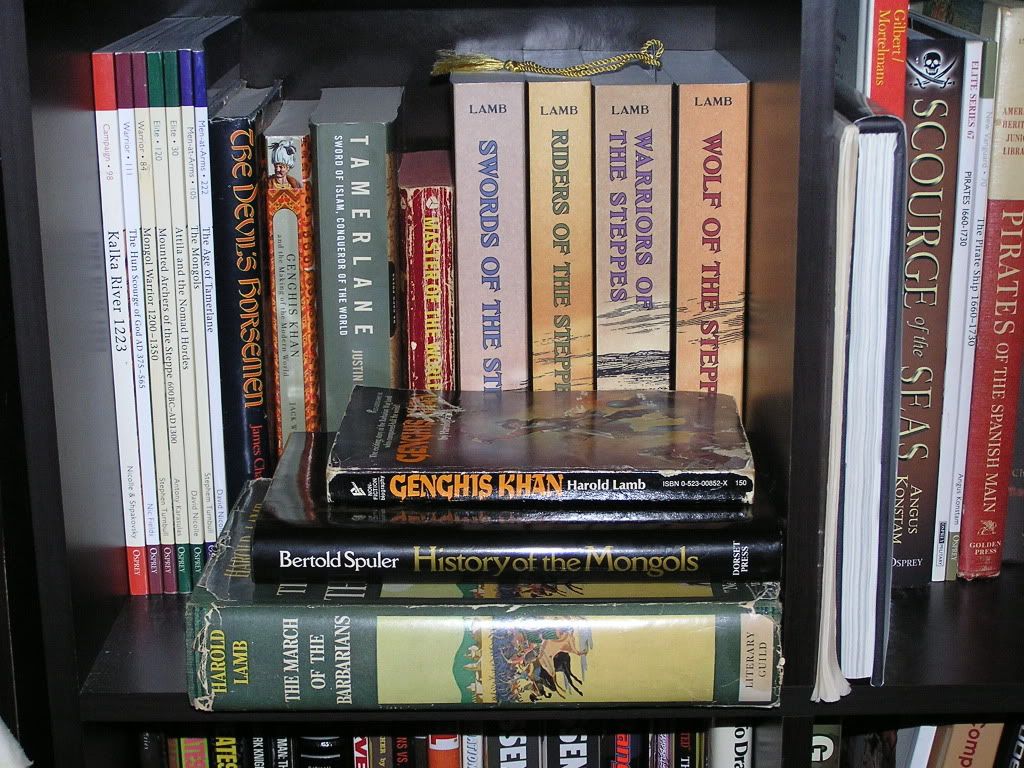
 This is my still small detachment of White Scars. Two bike squadrons (one painted to be veterans), a mounted Khan, a mounted Chaplain, a five man Assault Squad with jump packs, a Chaplain with jump pack, a Land Speeder Tornado, and a Predator tank.
This is my still small detachment of White Scars. Two bike squadrons (one painted to be veterans), a mounted Khan, a mounted Chaplain, a five man Assault Squad with jump packs, a Chaplain with jump pack, a Land Speeder Tornado, and a Predator tank.
I have parts to do another two bike squadrons in this style, another five assault marines, and two more Land Speeders.
But if you really want to have good looking White Scars... you need to customize them. You have to add odd, little bits here and there to give them an Asian, tribal feel. That means more planning, and more expense as you purchase the extra parts.

 This is my still small detachment of White Scars. Two bike squadrons (one painted to be veterans), a mounted Khan, a mounted Chaplain, a five man Assault Squad with jump packs, a Chaplain with jump pack, a Land Speeder Tornado, and a Predator tank.
This is my still small detachment of White Scars. Two bike squadrons (one painted to be veterans), a mounted Khan, a mounted Chaplain, a five man Assault Squad with jump packs, a Chaplain with jump pack, a Land Speeder Tornado, and a Predator tank.I have parts to do another two bike squadrons in this style, another five assault marines, and two more Land Speeders.
The first picture is my dismounted Khan. I also have a dismounted Stormseer, or Librarian. I've been considering doing an infantry adjunct to this force too. I'm ambitious when it comes to these armies, and I always think big. I do plan on finishing what I have in my parts box.
.JPG)
I admit I got tired of painting all that white. So I took a break to start the next project. Now, instead of white, I'm painting the only slightly easier color yellow.
That's right, my next project is the entire Fifth Company of the Imperial Fists, equipped for a siege, and backed up by elements of the deadly First Company and the stealthy Tenth Company scouts. That's well over one hundred yellow and black Space Marines.
EDIT: The previous links to the photos were broken. These are still my White Scars Marines, but the text may not match the pictures as closely.
.JPG)
I admit I got tired of painting all that white. So I took a break to start the next project. Now, instead of white, I'm painting the only slightly easier color yellow.
That's right, my next project is the entire Fifth Company of the Imperial Fists, equipped for a siege, and backed up by elements of the deadly First Company and the stealthy Tenth Company scouts. That's well over one hundred yellow and black Space Marines.
EDIT: The previous links to the photos were broken. These are still my White Scars Marines, but the text may not match the pictures as closely.
Subscribe to:
Posts (Atom)







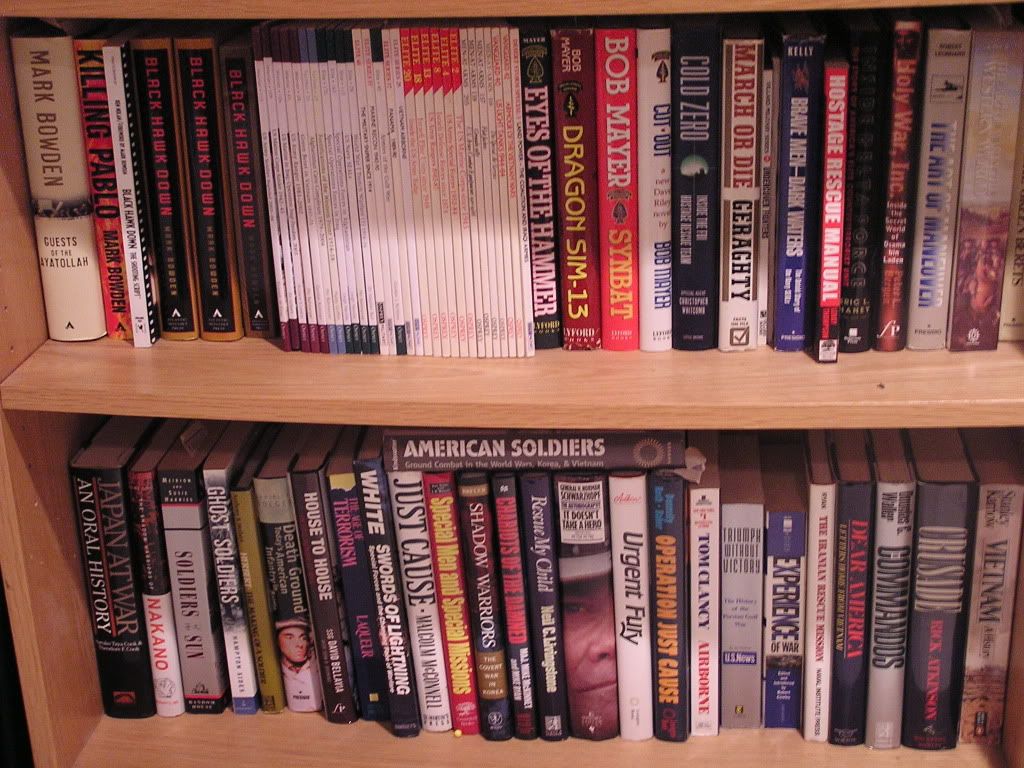
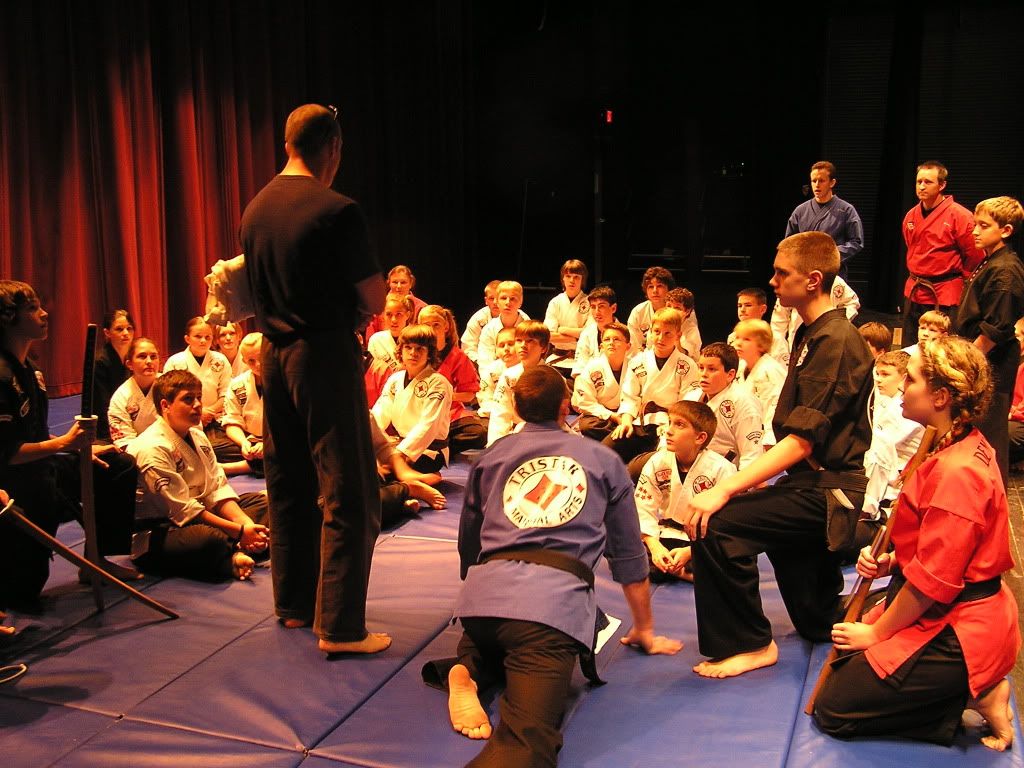
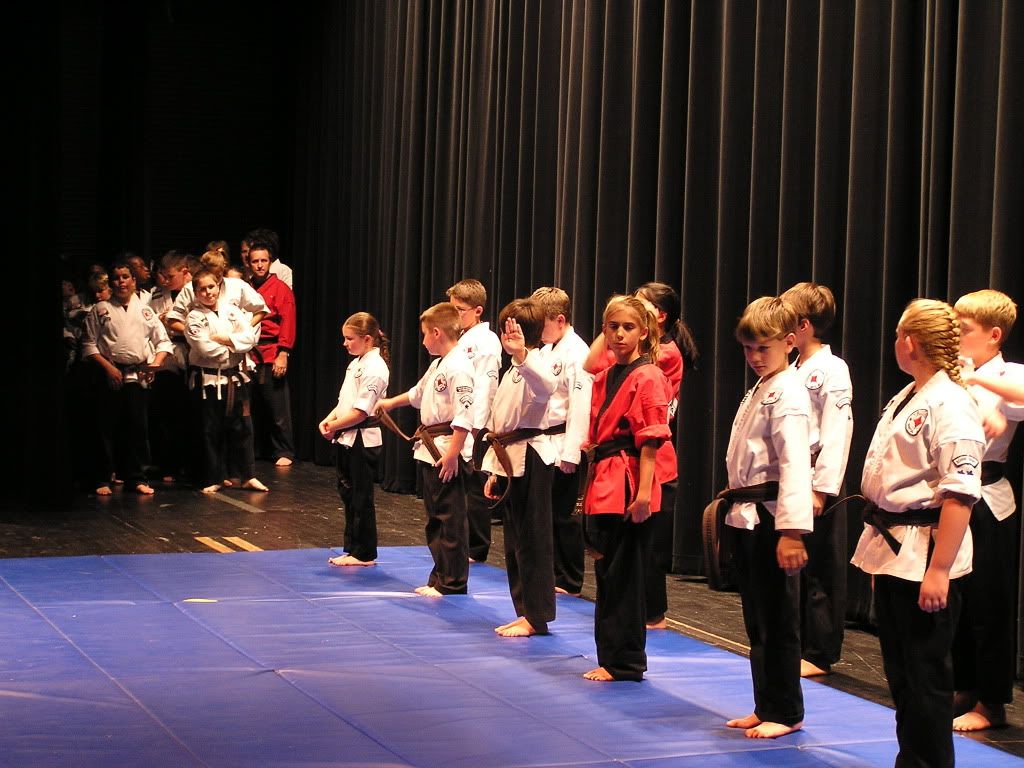

.JPG)




.jpg)